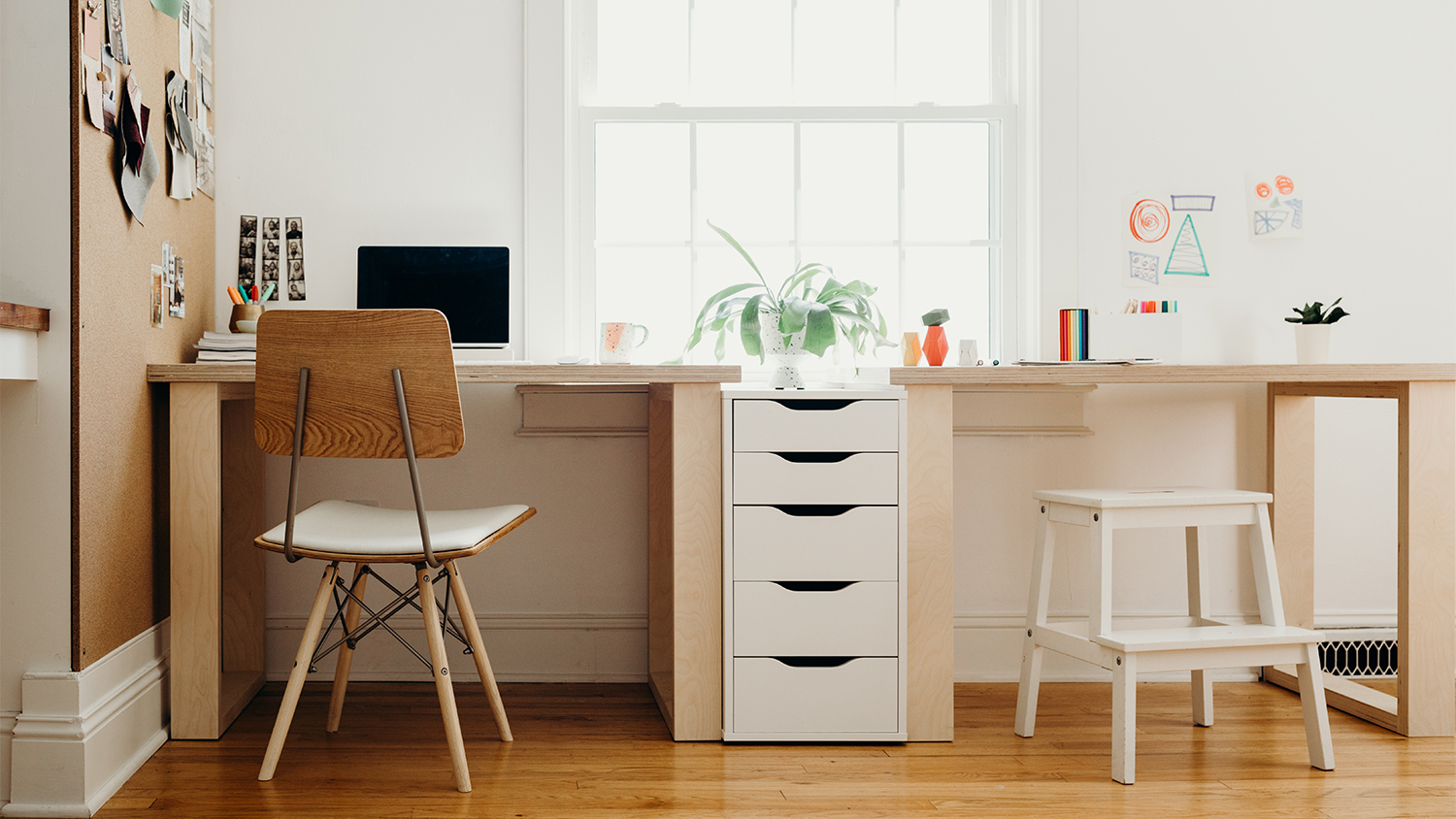
Get a clear estimate of the cost of a custom desk, including average prices, key cost factors, and tips to help you budget for your home office project.
Repair the wear and tear to keep your baseboards looking great
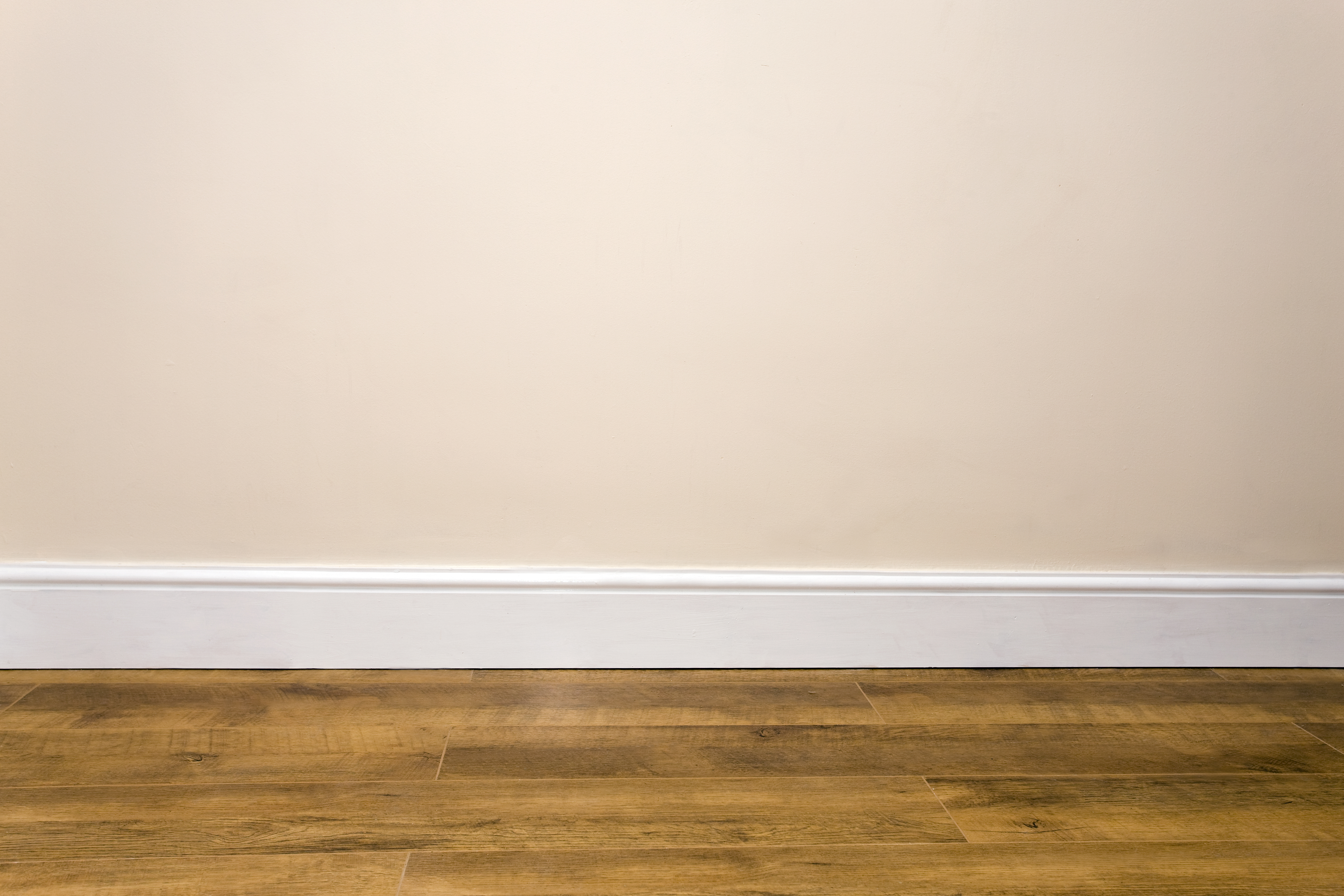

Improper baseboard repair can lead to bigger problems such as wall damage, mold growth, and warped floors.
A baseboard installation pro has the skills to fix trim problems correctly and help your baseboards last longer.
If the damage is extensive, a pro can determine if it’s better to repair or replace your baseboards.
You may not think about your baseboards very often, but these trim pieces help protect your walls from bumps, scratches, kick marks, water damage, and more. Since they see so much wear and tear, baseboards often sustain damage that needs to be repaired. In many cases, a handy homeowner can tackle baseboard repair as an afternoon project using one of these five methods to return baseboards to like-new condition.
Depending on the type and extent of the damage, baseboards in need of repair may not only look unsightly but may further damage your walls and floors. Water-damaged baseboards can lead to water-damaged walls, mold growth, and warped floors. Other types of baseboard damage can make it easier for pests to infiltrate your walls, causing infestations that can be costly and time-consuming to control.
Repairing minor baseboard damage can cost as little as $10 for the necessary supplies and tools, or as much as $1 to $10 per linear foot to replace extensively damaged baseboards. The cost to repair baseboards will depend on the material, the extent of the damage, and the method you use for repair.
Before beginning your repairs, assess the extent of the damage and decide if you need to repair or replace the damaged sections. It’s often quicker and easier to replace severely damaged baseboards than to try to fill or patch them to match undamaged sections. If you decide to replace the damaged sections, measure your baseboard trim so you can be sure to get the right replacement baseboard trim size for a seamless match.
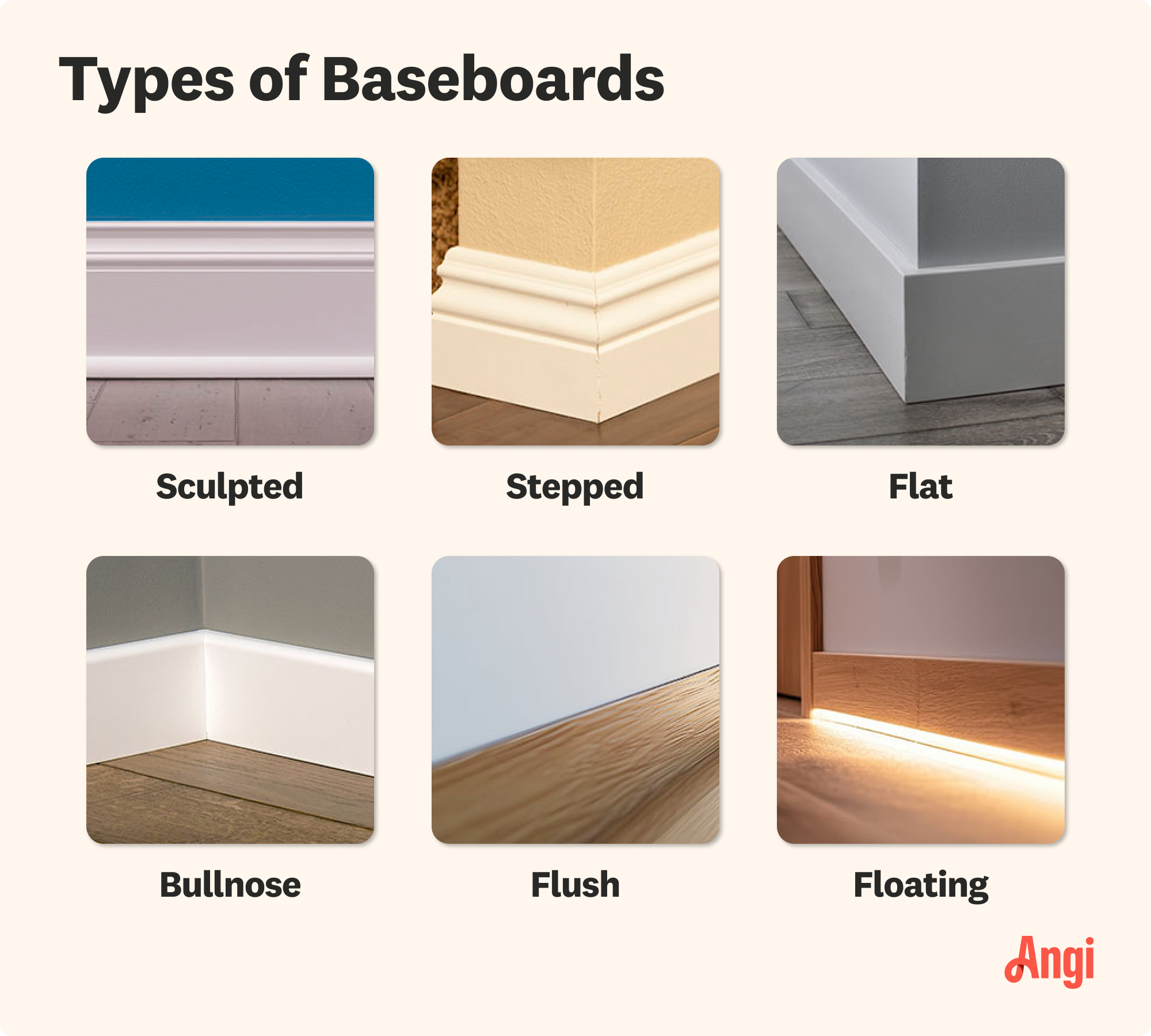
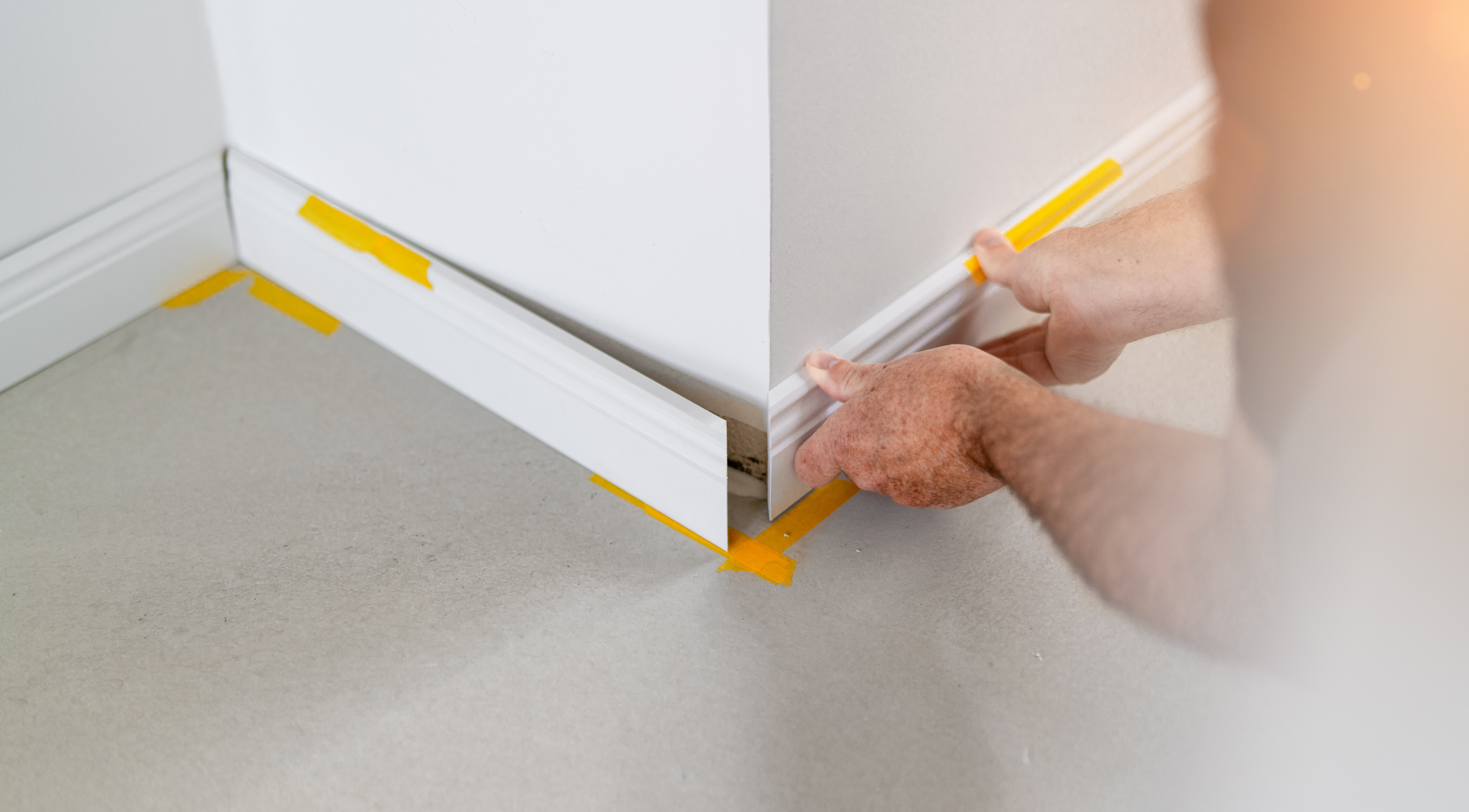
The method you choose to repair your baseboards will depend on the type and extent of the damage. These four repair methods cover everything from minor dents and dings to severely water-damaged trim.
For serious damage like extensive water damage, significant warping, or deteriorating trim, replacing the baseboard may be the best option. To replace a section of baseboard:
Remove the damaged baseboard using a putty knife or pry bar. Gently detach the damaged baseboard from the wall, collecting all nails used to attach the trim.
Measure and cut a replacement length of trim, keeping any angled cuts the same for a snug fit.
Attach the new molding with finishing nails, fill the nail holes with wood putty or filler, and sand the surface smooth.
Paint or stain the new molding to match.
For dents, dings, or small cracks, wood filler can help you get your baseboards looking good as new.
Gently sand down the damaged area to remove loose fibers and paint.
Wipe with a damp cloth to remove dust and fibers and let dry.
Fill the damaged area with paintable or stainable wood filler, molding it to match the existing trim.
Allow the filler to dry according to the manufacturer’s instructions.
Sand the surface with fine-grit sandpaper and wipe with a damp cloth to remove dust.
Paint or stain to match.
Like wood filler, you can use two-part wood epoxy to repair small sections of damage.
Remove damaged material and sand to remove loose fibers and paint.
Wipe with a damp cloth and allow the trim to fully dry. Wood epoxy will not properly adhere to wood with too high a moisture content.
Mix the epoxy together in the amounts indicated on the packaging.
Apply the epoxy to the damaged area and shape it to match the rest of the trim.
Let the epoxy fully dry for the time recommended by the manufacturer.
Sand the surface with fine-grit sandpaper and remove dust with a damp cloth.
Paint or stain to match.
Holes or other damage in the middle of your baseboards rather than against the top or bottom edge can be repaired using a patch of the same material.
Cut a patch that’s slightly larger than the damaged area from the same material your baseboards are made of. The patch should be thinner than the baseboard itself, rather than matching the full depth.
Using a router with a top-bearing flush bit, carefully cut a shallow hole the size and depth of the patch around the damaged area.
Apply wood glue to the back and sides of the patch and insert it into the hole.
Use wood filler to fill in any gaps around the patch.
Let the glue and filler fully dry.
Sand around the patch for a smooth surface and wipe away dust with a damp cloth.
Paint or stain to match.
For very minor damage like shallow scratches, baseboard repair may be as simple as sanding and painting or staining the damaged area.
Use a fine-grit sandpaper to smooth out any shallow surface damage.
Wipe dust away with a damp cloth.
Allow the trim to dry.
Paint or stain to match.
Most baseboard damage results from impact or water damage. Certain materials, like medium-density fiberboard (MDF), are more susceptible to damage. Consider installing wood, PVC, or vinyl baseboard trim, which are more durable and less prone to impact and water damage. Baseboard corner guards can protect trim corners from impact damage, pet damage, and more. These guards may be clear acrylic for unobtrusive protection or decorative materials to add a stylish design flourish.
You can tackle most minor baseboard damage as a DIY project, but if the damage is extensive or you aren’t confident in your repair skills, hire a pro to replace your baseboards or repair the damage. A local baseboard installation pro can repair or replace damaged baseboards and provide like-new results.
You'll pay more for labor fees if you book a pro—between $50 and $100 per hour—but will save money in the long run by avoiding any potential damage done with a DIY job.
From average costs to expert advice, get all the answers you need to get your job done.

Get a clear estimate of the cost of a custom desk, including average prices, key cost factors, and tips to help you budget for your home office project.
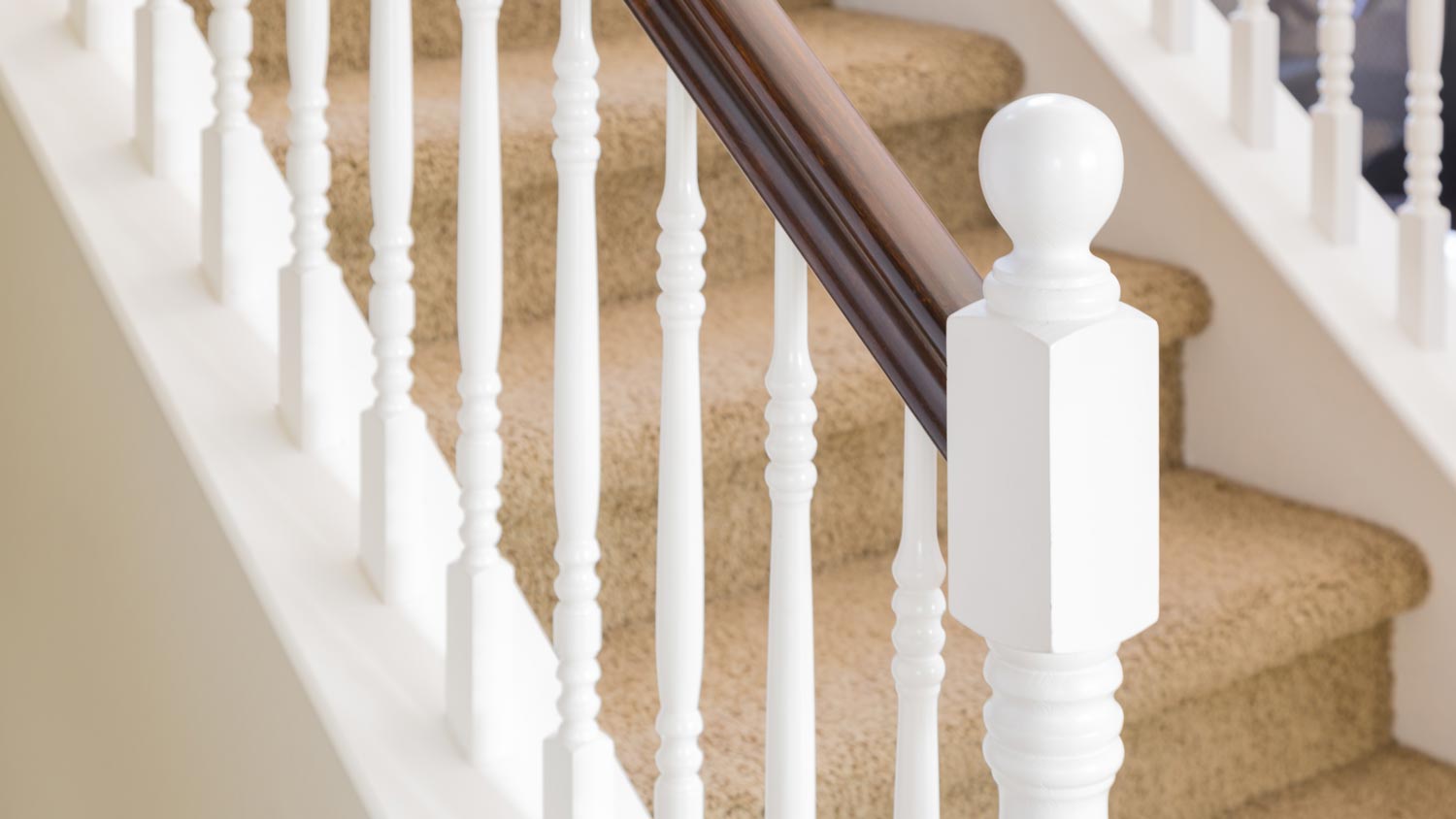
Get expert insights on stair railing repair cost, including average prices, cost factors, and tips to save money. Plan your stair railing repair project with confidence.

When calculating the cost of building a treehouse, consider the size, types of materials, and design. This guide will help you figure out what to budget.

We explore the differences between caulk versus wood filler for your project. Learn which is best for sealing, filling, and repairing damaged wood.
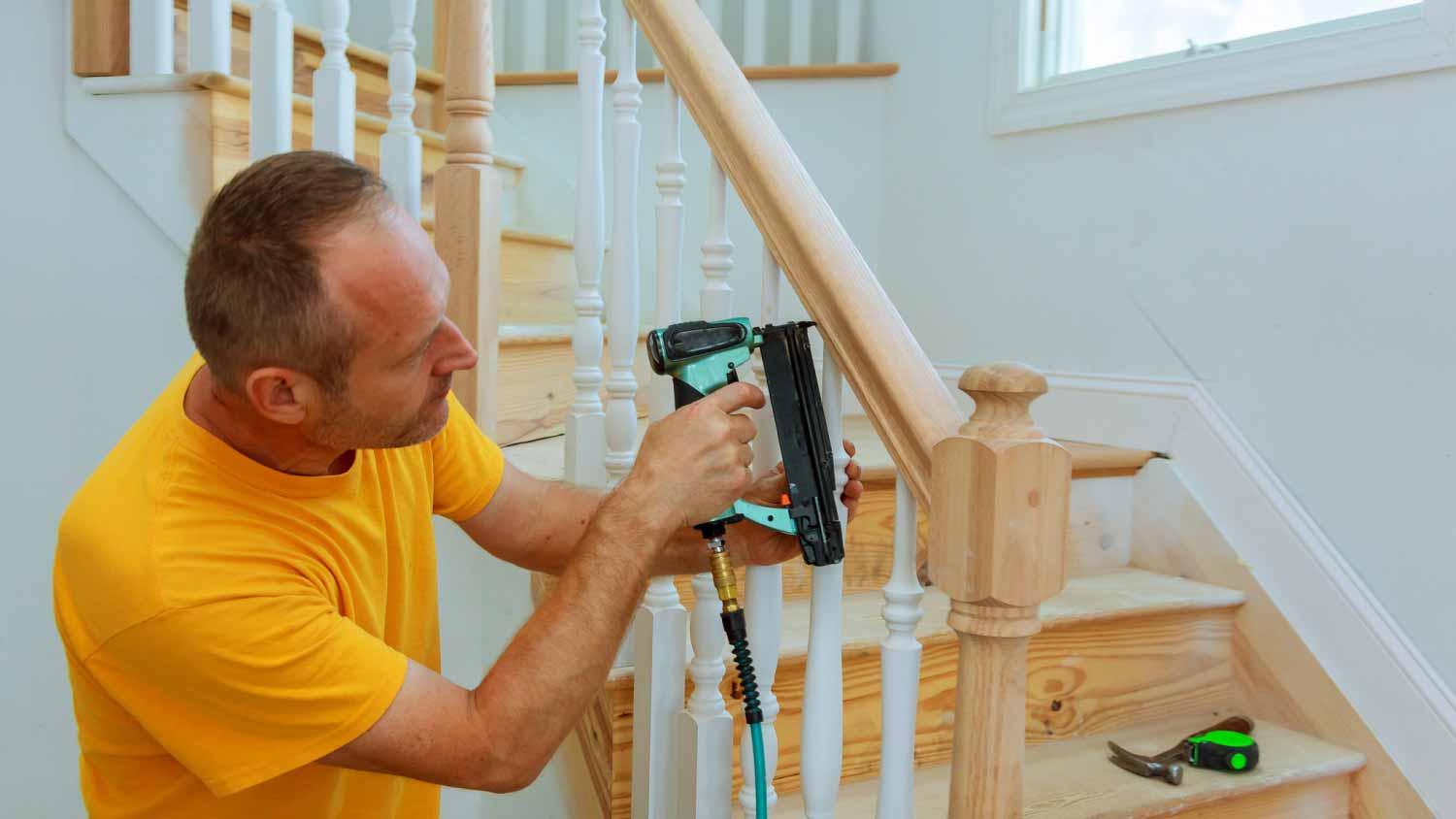
Looking to reduce fall risks in your staircase? Learn how to install a stair railing that meets building codes and keeps everyone in your home safe.

While both can perform most carpentry work required for house projects, the major difference between a journeyperson vs. a master carpenter is their years of experience.